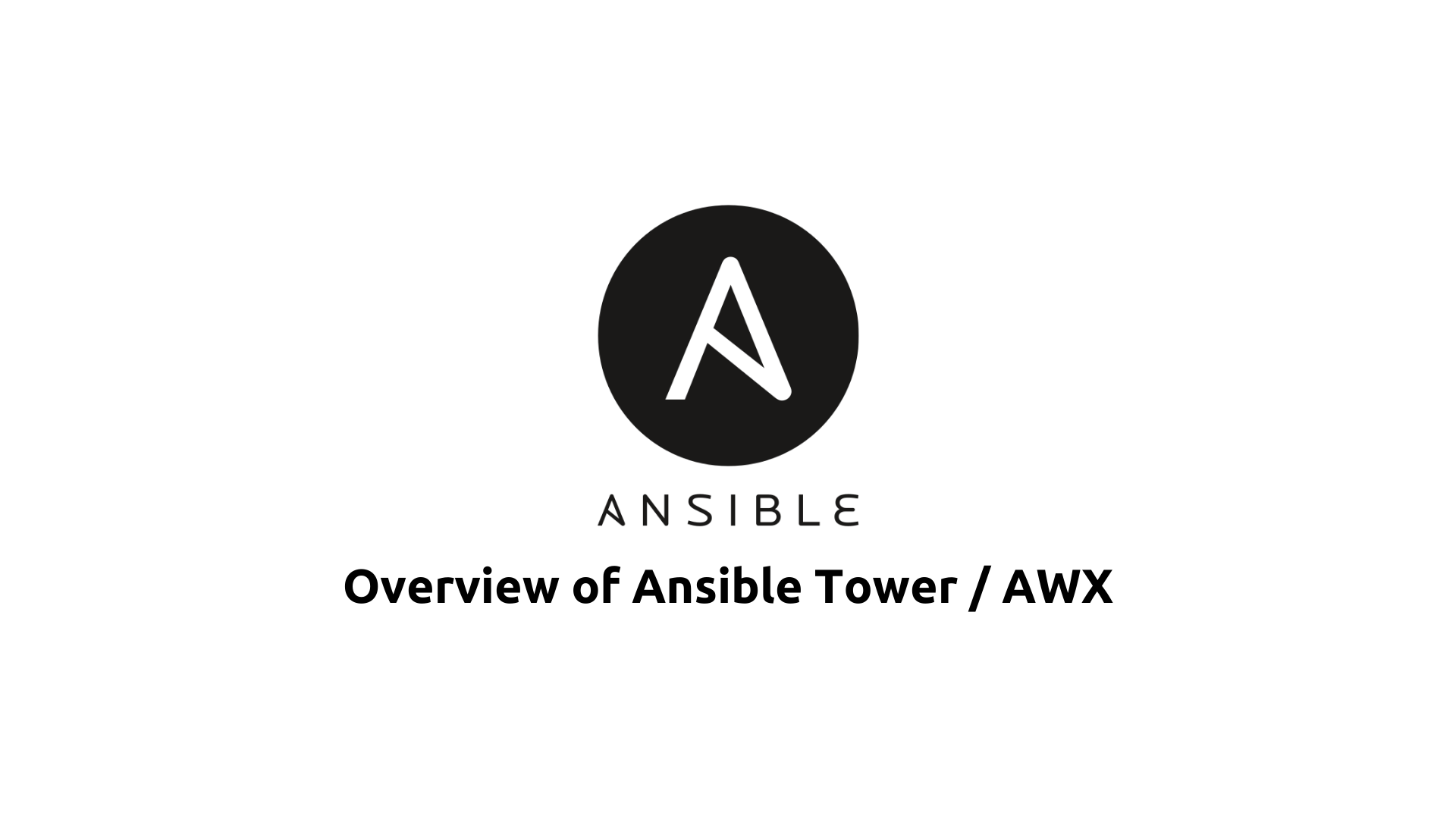Overview of Ansible Tower / AWX
 Saurabh Adhau
Saurabh AdhauTable of contents

Introduction
Ansible Tower and AWX are powerful automation platforms built on top of Ansible that provide centralized management, orchestration, and monitoring of Ansible automation workflows. They offer a web-based graphical interface, role-based access control, scheduling, notifications, and other features to streamline and enhance Ansible automation across organizations. In this article, we'll provide an in-depth overview of Ansible Tower and AWX, exploring their key features, benefits, and use cases.
Key Features of Ansible Tower / AWX
Web-Based Interface: Ansible Tower and AWX feature a user-friendly web-based interface that allows users to manage automation workflows, create playbooks, and monitor job execution.
Role-Based Access Control: Both platforms provide role-based access control (RBAC), allowing administrators to define granular permissions and access levels for users and teams.
Job Scheduling: Ansible Tower and AWX support job scheduling, enabling users to automate tasks at specific times or intervals, reducing manual intervention.
Notifications: The platforms offer built-in notification capabilities, allowing users to receive notifications via email, Slack, or other channels based on job status and events.
Inventory Management: Ansible Tower and AWX provide centralized inventory management, allowing users to define and organize hosts and groups for automation tasks.
Integration: Both platforms integrate seamlessly with existing tools and systems, including version control systems (e.g., Git), configuration management databases (e.g., LDAP), and monitoring solutions (e.g., Prometheus).
Benefits of Ansible Tower / AWX
Centralized Management: Ansible Tower and AWX provide a centralized platform for managing Ansible automation workflows, improving visibility and control across the organization.
Scalability: The platforms support scaling automation workflows to handle large-scale infrastructure environments, ensuring consistency and reliability.
Productivity: Ansible Tower and AWX streamline automation tasks, reducing manual intervention and freeing up resources to focus on higher-value activities.
Collaboration: With role-based access control and integrated collaboration features, the platforms facilitate teamwork and collaboration among users and teams.
Auditability: Ansible Tower and AWX offer audit logs and reporting capabilities, allowing administrators to track and audit changes made to automation workflows.
Conclusion
Ansible Tower and AWX are powerful automation platforms that provide centralized management, orchestration, and monitoring of Ansible automation workflows. With their user-friendly interface, role-based access control, scheduling, notifications, and other features, they streamline and enhance automation across organizations, improving productivity, scalability, collaboration, and auditability.
Subscribe to my newsletter
Read articles from Saurabh Adhau directly inside your inbox. Subscribe to the newsletter, and don't miss out.
Written by

Saurabh Adhau
Saurabh Adhau
As a DevOps Engineer, I thrive in the cloud and command a vast arsenal of tools and technologies: ☁️ AWS and Azure Cloud: Where the sky is the limit, I ensure applications soar. 🔨 DevOps Toolbelt: Git, GitHub, GitLab – I master them all for smooth development workflows. 🧱 Infrastructure as Code: Terraform and Ansible sculpt infrastructure like a masterpiece. 🐳 Containerization: With Docker, I package applications for effortless deployment. 🚀 Orchestration: Kubernetes conducts my application symphonies. 🌐 Web Servers: Nginx and Apache, my trusted gatekeepers of the web.